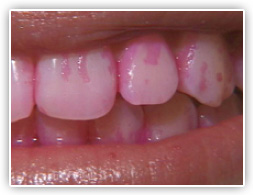Dentists deal with patients in pain every working day. It is our goal to alleviate as much suffering as possible. As part of the process, many times a pain reliever must be prescribed. Although there are some extremely effective anti-inflammatories available for mild to moderate pain, many times, a narcotic pain reliever may be the only type strong enough to relieve the dental pain. Unfortunately, overuse of narcotic pain relievers can lead to addiction. In addition to the pain relieving aspects of narcotics, they also produce euphoria. This can lead to a learned reward experience and can cause a craving to relive the same feeling even after the need for pain control is gone. As more doses are taken, a tolerance is progressively built up, meaning that higher doses are required to achieve the same effect. Dentists need to be aware of patients who experience “pain” with visible source and require heavy doses of narcotics to relieve that “pain”. With the advent of computer networks, dentists now have the ability to check online to see if a particular patient is a “drug seeker”. This allows a dentist to have the piece of mind in prescribing narcotics to provide his patients with proper and adequate pain control.
Preparing the Gums for Dentures
Constructing a new set of dentures is not always as straight forward as taking a quick impression of one’s mouth. First, the dentist must check the tissues for any pathology. It is certainly not a good idea to build a denture over a tumor or cancer. The next thing to check is the condition of the ridges of the gums themselves. If there is inadequate bone to allow for good retention and stability of a denture, then a bone graft may need to be considered. Artificial bone substitutes, cadaver bone, or pieces of the patient’s own bone can be placed under the gums surgically to add enough bulk to comfortably wear a denture. If there are bumps of bone called tori or severe bony undercuts that rigid plastic could not snap around, then they need to be surgically removed. The dentist peels a flap of gum tissue that is over the bony prominence and grinds the offending piece of bone off and smooth the area. In other cases, there could be flabby, moveable tissue or even extra folds of gums which would make a denture unstable. This would also have to be surgically removed. By properly preparing a good gum foundation, a very well fitting set of dentures can be constructed.
Snap-On Smile (Part II)
In my previous blog, I discussed the indications and contraindications of a Snap-On Smile. A Snap-On Smile is a custom made piece of acrylic plastic that covers the front teeth. It is a temporary, lower cost alternative to permanent cosmetic dental treatment. In order to construct a Snap-On Smile, the dentist will fill all cavities and remove any hopelessly loose teeth. At that point, the dentist will make a custom mold of the teeth with an extremely accurate impression material called polyvinylsiloxane. A model of the teeth that will oppose the Snap-On Smile is made from another mold and a bite impression is taken in order to relate the two models together. Pictures are taken to make sure that the lab has the ability to build the smile in the proper alignment with the face. And, last, but not least, a color is selected. All of this material is sent to a lab where they construct the Snap-On Smile prosthesis. Then the big day comes when the Snap-On Smile is ready for insertion.  The new prosthesis is tried in for proper fit and function. With good technique in the preliminary stage, usually adjustments are minimal. And it sure makes for a happy patient to have their smile instantly restored! If you are interested in seeing our video of Snap-On Smile, please follow this link: http://youtu.be/8N4BE9PEgOs
The new prosthesis is tried in for proper fit and function. With good technique in the preliminary stage, usually adjustments are minimal. And it sure makes for a happy patient to have their smile instantly restored! If you are interested in seeing our video of Snap-On Smile, please follow this link: http://youtu.be/8N4BE9PEgOs
Snap-On Smile
 Snap-On Smile has been a welcome addition to the dentists bag of cosmetic tools. The name says it all – it’s a smile that simply snaps on. Before one considers a Snap-On Smile, they must understand the indications and limitations. Snap-On Smile is not meant to cover cavities or hopelessly loose teeth. All cavities must be filled ahead of time. Also teeth that have too much bone loss that makes them to shaky to withstand the snapping forces must be removed. Snap-On Smile is not meant to be a permanent solution to a cosmetic dental problem. It is not meant to replace lost function from chewing forces due to lost teeth. What Snap-On Smile is is a lower cost alternative to what can be expensive cosmetic dental procedures. It can cover discolored teeth. It can cover mismatched spacing between the front teeth. It cannot be used where the teeth are too far forward already such as “buck” teeth since a thin layer of plastic will be snapped on over the front teeth. Snap-On Smile allows people to go out in public and feel confident with a big, wide smile and showing off their pearly whites.
Snap-On Smile has been a welcome addition to the dentists bag of cosmetic tools. The name says it all – it’s a smile that simply snaps on. Before one considers a Snap-On Smile, they must understand the indications and limitations. Snap-On Smile is not meant to cover cavities or hopelessly loose teeth. All cavities must be filled ahead of time. Also teeth that have too much bone loss that makes them to shaky to withstand the snapping forces must be removed. Snap-On Smile is not meant to be a permanent solution to a cosmetic dental problem. It is not meant to replace lost function from chewing forces due to lost teeth. What Snap-On Smile is is a lower cost alternative to what can be expensive cosmetic dental procedures. It can cover discolored teeth. It can cover mismatched spacing between the front teeth. It cannot be used where the teeth are too far forward already such as “buck” teeth since a thin layer of plastic will be snapped on over the front teeth. Snap-On Smile allows people to go out in public and feel confident with a big, wide smile and showing off their pearly whites.
A Child’s First Trip to the Dentist
A good experience at a child’s first trip to the dentist is vitally important in shaping their future behavior at dental visits. When a child’s first time at a dental office is to relieve the pain of a toothache, that can greatly affect their future perceptions of the dentist and produce fear and behavior management issues. Therefore, it is important to make the first appointment for a cleaning and checkup around the child’s third birthday.  The days leading up to the first visit should be filled with stories about the fun, exciting trip to the dentist that is coming up. If a parent has a fear of the dentist, they should be careful to not project that fear on to the child. Kids are more perceptive than you think. The parents need to make sure that big brother doesn’t fill the patient with needless horror stories. And they shouldn’t ever say things like “If you don’t behave, I’m going to take you to the dentist.” At our office, we try to make every trip to the dentist a fun adventure with cartoons playing on TV’s in the ceiling, good tasting toothpastes and fluorides, and trips to the treasure chest afterwards. Having a pleasant experience at the first dental will help alleviate apprehension at future dental appointments.
The days leading up to the first visit should be filled with stories about the fun, exciting trip to the dentist that is coming up. If a parent has a fear of the dentist, they should be careful to not project that fear on to the child. Kids are more perceptive than you think. The parents need to make sure that big brother doesn’t fill the patient with needless horror stories. And they shouldn’t ever say things like “If you don’t behave, I’m going to take you to the dentist.” At our office, we try to make every trip to the dentist a fun adventure with cartoons playing on TV’s in the ceiling, good tasting toothpastes and fluorides, and trips to the treasure chest afterwards. Having a pleasant experience at the first dental will help alleviate apprehension at future dental appointments.
Children’s Fear of the Dentist
 Many factors can contribute to a child’s fear of the dentist. On top of that list is a bad experience at a previous dental appointment. The younger the age, the higher likelihood that a child will have a fear of the dentist. It has even been shown that parents can pass along their own fear of the dentist. Children are very perceptive and can sense that a parent is stressed when talking about a dental visit. I employ a number of techniques to help allay a child’s fear. We have TV’s in the ceiling with cartoons playing which helps distract the child. Just something as simple as using a gentle, friendly voice and a smile can also put the child at ease. The “tell-show-do” technique works great. I tell them about the “water sprayer” that will flush out all of the “cavity bugs”, then I will take the dental hand piece and spray water on their hand so that they can see that there is nothing to fear. Then, for the “do”, I touch the anesthetized tooth which produces a gentle vibration so that they can see that there is no pain. And speaking of the numbing process, they are never shown the needle. They just get a little “pinch” to put the tooth to sleep. By employing just a few simple techniques can greatly reduce a child’s fear of the dentist and make it a pleasant experience.
Many factors can contribute to a child’s fear of the dentist. On top of that list is a bad experience at a previous dental appointment. The younger the age, the higher likelihood that a child will have a fear of the dentist. It has even been shown that parents can pass along their own fear of the dentist. Children are very perceptive and can sense that a parent is stressed when talking about a dental visit. I employ a number of techniques to help allay a child’s fear. We have TV’s in the ceiling with cartoons playing which helps distract the child. Just something as simple as using a gentle, friendly voice and a smile can also put the child at ease. The “tell-show-do” technique works great. I tell them about the “water sprayer” that will flush out all of the “cavity bugs”, then I will take the dental hand piece and spray water on their hand so that they can see that there is nothing to fear. Then, for the “do”, I touch the anesthetized tooth which produces a gentle vibration so that they can see that there is no pain. And speaking of the numbing process, they are never shown the needle. They just get a little “pinch” to put the tooth to sleep. By employing just a few simple techniques can greatly reduce a child’s fear of the dentist and make it a pleasant experience.
Plaque Disclosing Tablets
Dental plaque is a sticky bacterial residue that forms on your teeth. The bacteria in your mouth uses sugar that you eat to produce a sticky substance that allows it to adhere to the teeth. They then colonize on the teeth and use more sugar to produce acids and toxins that are the root cause of cavities and gum disease. By removing this bacterial film on a daily basis, you can help keep your teeth and gums healthy. One problem with dental plaque is that it is invisible. The good news is that it can be stained with plaque disclosing tablets. Made of a harmless vegetable dye, a tablet is chewed and then swished for 30 seconds. What is left behind are brightly colored areas of plaque.
Surprise! Just when you thought that you were doing a great job with brushing and flossing, you see all the areas you miss. It’s amazing how many nooks and crannies that plaque can hide out in. Brush and floss again, then chew another tablet. It’s amazing how much better a job you can do when you can see what you are cleaning off. Plaque disclosing tablets are a great aid in training yourself to do a thorough, yet efficient job of daily oral hygiene.
Relining Dentures
When teeth have been extracted, the body will slowly resorb the bone that once held the teeth. When dentures are made, a mold is made of the mouth and then the denture is constructed. But as the years go by, the bone continues to erode away while the plastic stays the same. This causes gaps to form between the dentures and the gums, which will eventually cause the dentures to become loose and ill-fitting. The good news is that the plastic can be relined without having to make an entirely new denture.
To reline a denture, the dentist will hollow out the inside of the denture without affecting the teeth. An adhesive is painted on and the inside of the denture is filled with an impression paste. This is inserted into the mouth and it sets, thus making a mold of the new form of the gums. A lab tech then makes a model by pouring plaster into the mold. He then cuts aways the old plastic and packs new plastic between the new model and the denture teeth. Voila – a well-fitting denture, almost good as new. This procedure can be done much more inexpensively than constructing new dentures. It can help restore a denture to its original fit.
Denture Adhesives (Part II)
In the first part of this blog, I talked about why not to use denture adhesives. Once all the reline procedures have been tried, there are occasional instances where there is still not enough bone to provide enough surface area for adequate retention and stability. In those cases, a patient will usually have to rely on denture adhesives. Also on cases where a patient would be too self-conscious about a denture slipping while out in public, denture adhesives can be helpful. Denture adhesives come in powder, paste, or adhesive pads. Any of the forms work reasonably well, so which variety or brand is totally up to personal preference. There has been a lot of talk lately in the media about zinc in denture adhesives. Too much zinc in the body can cause nerve damage. It turns out that patients who were experiencing symptoms of zinc toxicity were overusing the product. Only the smallest amount of denture adhesive should be used and that should minimize any toxic effects. Lately, many companies have reformulated their products to be zinc-free, so that would alleviate any concerns.
Denture Adhesives
Denture adhesives are used to help retain dentures in the mouth. Before denture adhesives are used, a dentist should be consulted. Ill fitting dentures can cause areas of chronic irritation which can lead to mouth sores and ulcers and eventually could be a source of malignant transformation. Mouth cancer is not something to be taken lightly, so a dental examination is always best to have before considering denture adhesives. Most ill-fitting dentures can be relined with new plastic to have them conform to the gums better. When teeth are removed, the body realizes that there is no need for the bone to hold the teeth in, so it slowly allows the bone to dissolve. Since the denture plastic doesn’t change, gaps begin to form which causes a loss of suction. A reline will fill in the gaps, restoring the suction. There are other times, especially on the lower, where there is not enough bone for adequate retention and stability. In this case, it is best to train the muscles to keep the denture in place while chewing and talking. This will allow the denture to stay in place during function.


